As you can see in the first couple of images, the bed is looking quite nice right now...
...at least from certain angles.
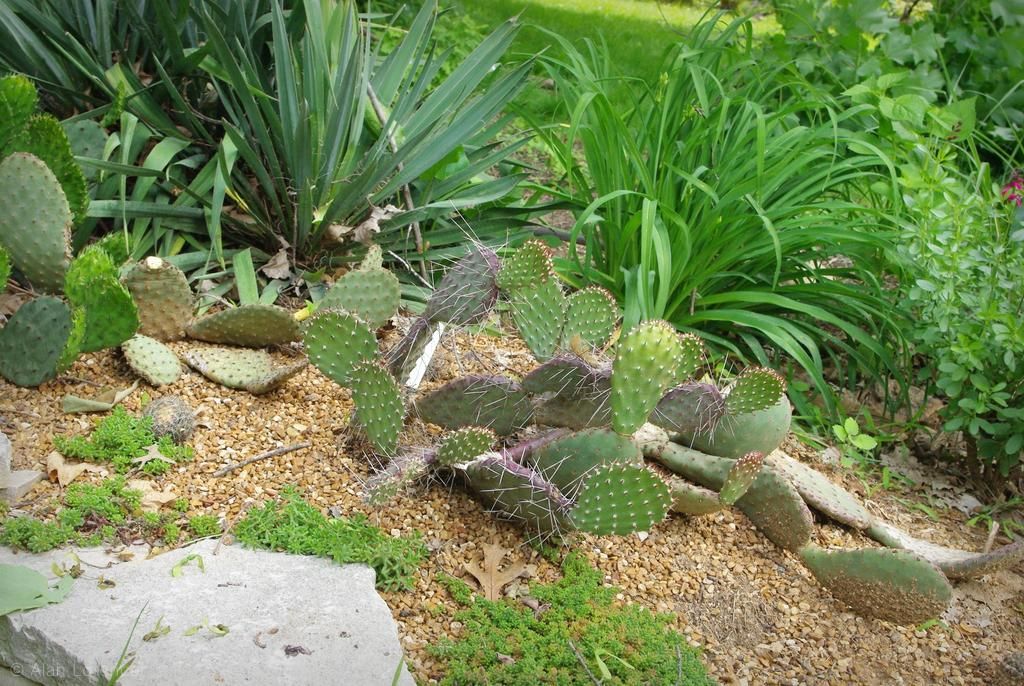 |
| Opuntia 'Dark Knight' is the purple one in the center |
All is not perfect though, as there was some winter dieback...
 |
| I accidentally knocked a pad off with a tree branch. :( |
I'm happy to say though that none of the plants completely died, but I do need to do some cleanup.
In particular this one plant (Opuntia aurea ‘Coombe’s Winter Glow’), which sprawled like no other Opuntia I've seen...
...with each pad rooted to the ground:
I didn't know that they would root from the middle of the flat sides of the pads, but they did. So I removed the damaged parts, dug up most of the remains, and repositioned them further back:
I'm hoping that they'll sprout new vertical growth at some time in the future, and not insist on being so recumbent. I didn't touch the part that is intertwined with the Opuntia 'Dark Knight' (seen to the left of that last image) as the Dark Knight is healthy but toppling forward. (I propped it up with a stick -- not sure what else I can do right now).
Although most of the Opuntia are leaning forward where there is more sunlight (there is a tree partially above them), one of them has decided to go against the flow and spread backward...
...right into the Yucca filamentosa, which is expanding forward. This will be fun to resolve...
The yucca is so pretty though, and is a perfect companion to the cactus.
It's interesting to me that two winters ago I didn't remove any of the leaves from this bed and these cactus all seemed to do better than they did this year when I removed all of the leaves. Hmmm.
I still think my soil isn't as well-draining as it could be here...
.

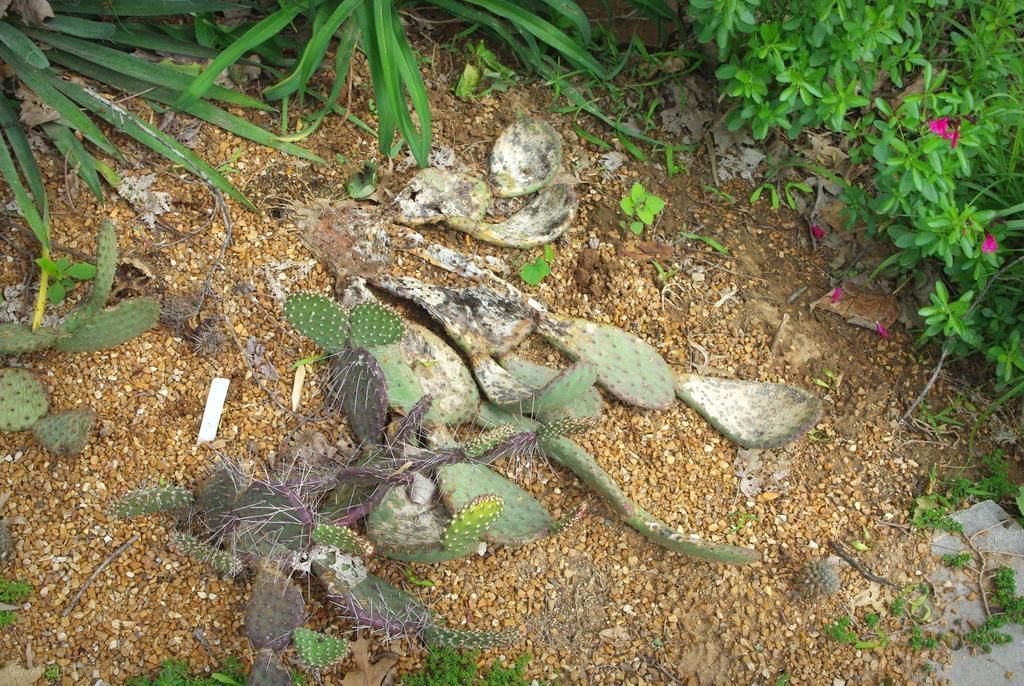

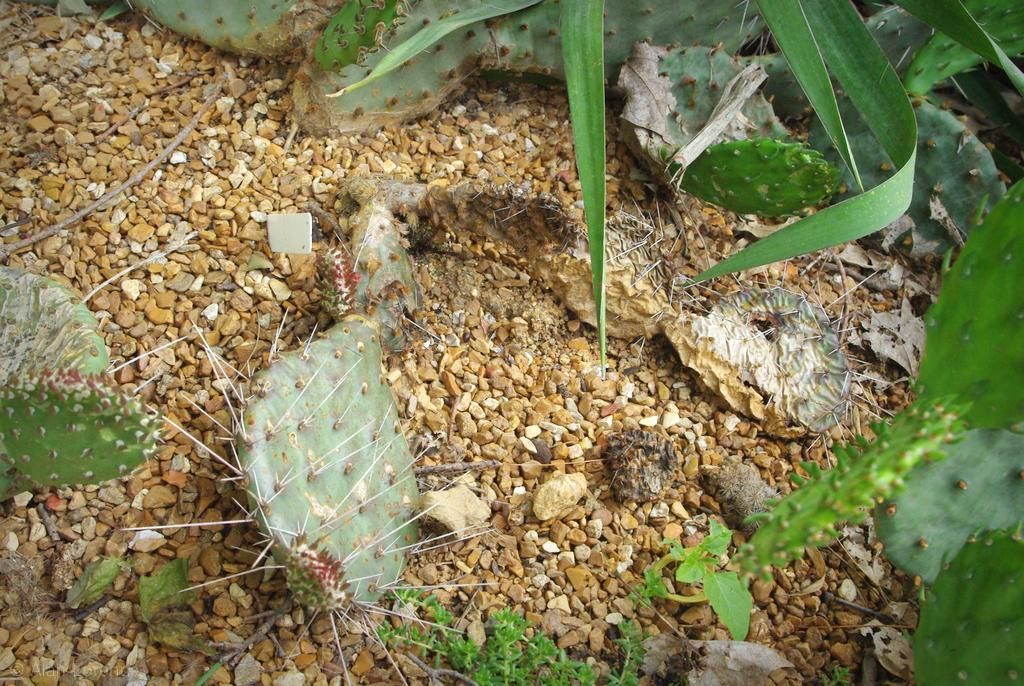
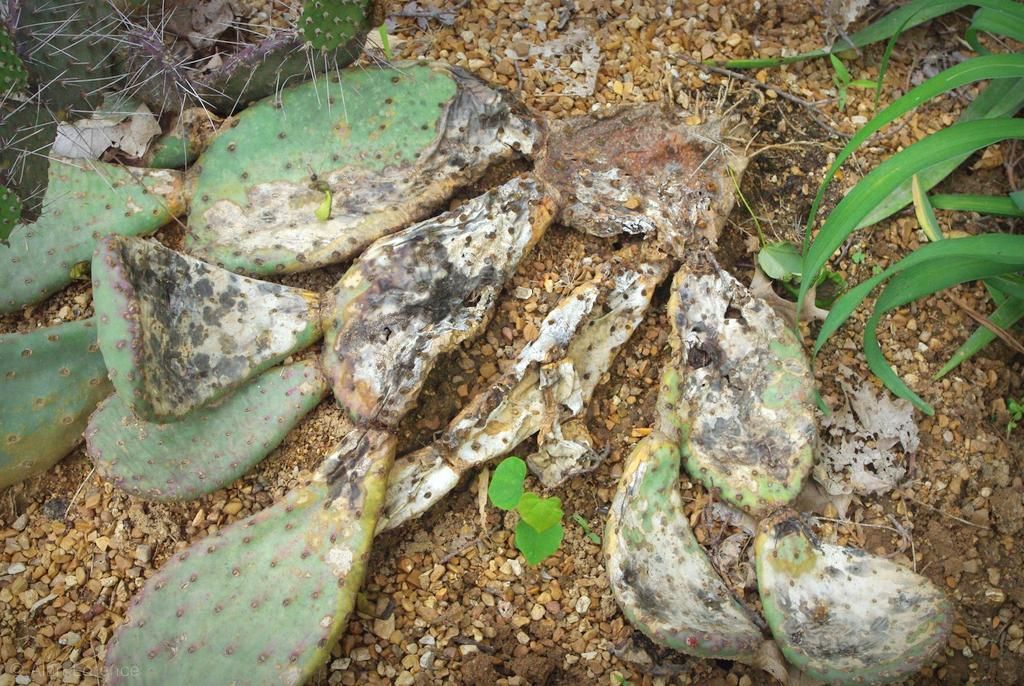
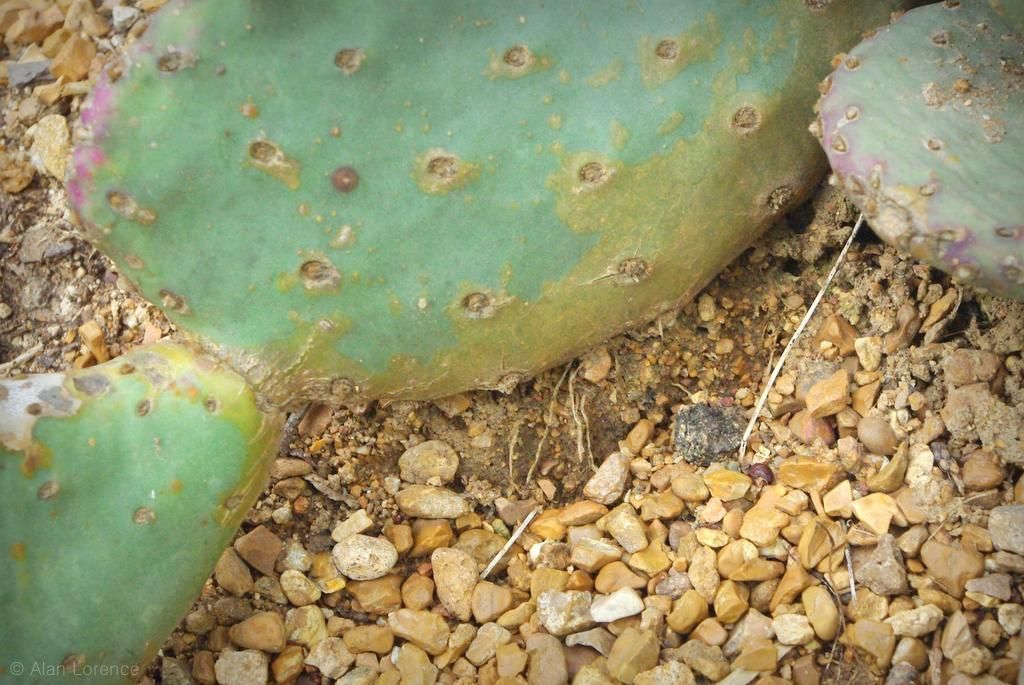
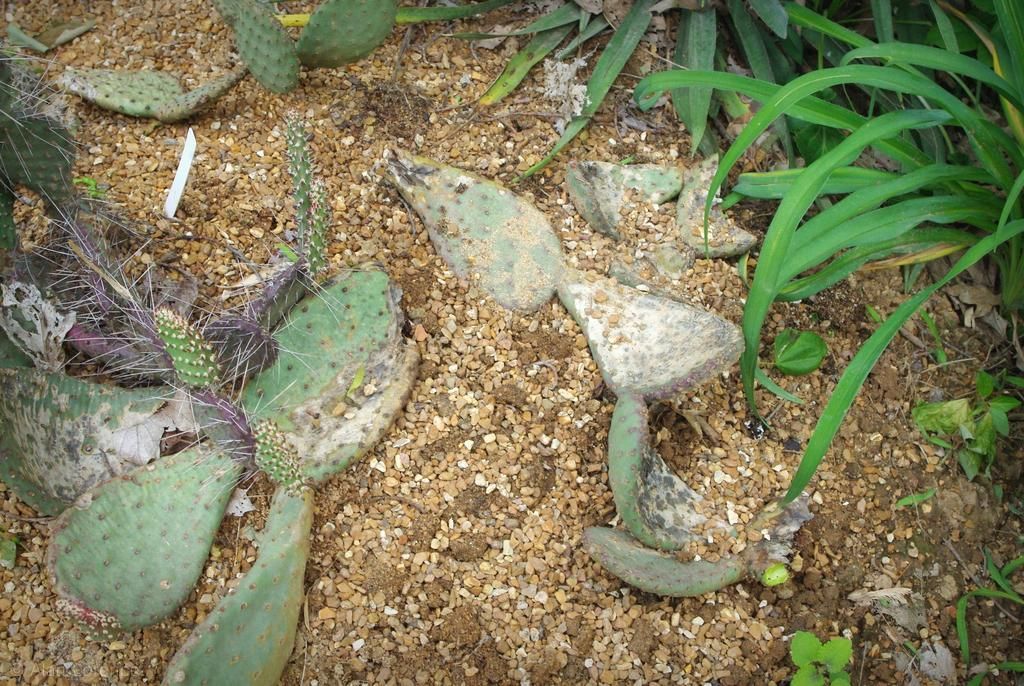
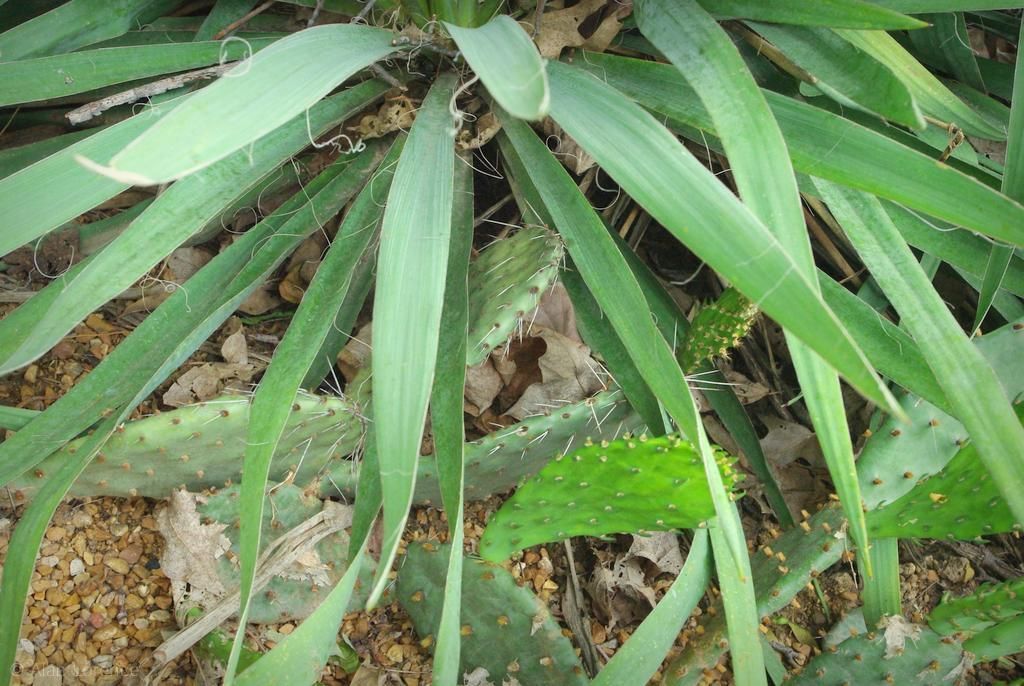

Ouch! I've quit with most opuntias with glochids as I don't like donning armor to garden and those pesky glochids find their way everywhere. I admire them and have a few that will stay in the greenhouse out of reach and Opuntia ellisiana which is blessedly glochid free. Your combination with the yucca is perfect; great foliage contrast. Have fun with the tweezers and magnifying glass or duct tape method, whichever you prefer to remove those pesky things from your skin.
ReplyDeleteIt's looking pretty good! And curious that those that have recumbent are now rooted. I can imagine that all of them will have nice new growth over the next few weeks. Fingers crossed those will remain upright!
ReplyDeleteThat is a joke around here about the opuntis rooting. Just throw they out like a frisbee and they will root. They will also make flowers off the side of the pad. Whatever takes their fancy. I have massive areas of dead opuntia so it is a natural occurrence and not so much to do with weather. Then I have some like tree trunks. Enjoy your yucca flower. It will be very pretty and a great companion for the opuntias.
ReplyDeleteAs Jenny said they do make flowers off the sides of the flat pads. I just noticed some of mine are doing that. Crazy things.
ReplyDeletePeter: I do hate the glochids, but have learned (in theory) to just not put any bare skin near these things.
ReplyDeleteMark/Gaz: they won't stay upright. In colder climates it seems rare that these get more than a foot tall.
Jenny: It makes sense when you think about it, because they're not going to land on their edge in the wild, are they? :)
Loree: crazy is good, right? :)
I think your bed is looking good! I'm actually not surprised they the pad that touched the ground rooted. You see the same behavior from other opuntias (incl. cylindropuntias like the infamous jumping cholla). That's one of their methods of propagation.
ReplyDelete